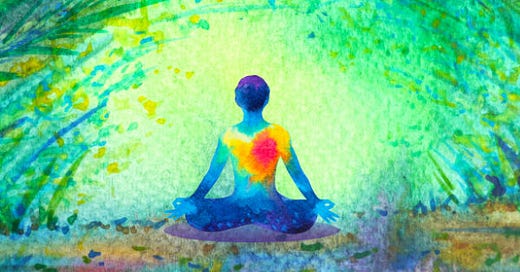According to a reliable source, the heart has its own nervous system. And like the nervous system, the heart is affected by the movement of the breath because it’s connected to the diaphragm.
As the diaphragm moves up and down like a pump, air fills up and empties out the lungs and the heart beats faster or slower depending on its rhythm. If it’s smooth, it will beat smoothly. If it’s erratic, it will beat erratically.
This led Rumi - one of my favourite poets - to say: “The heart has its own language.”
There are many ways to tap into the language of the heart. The breath is one of them.
“When our hearts are in a state of coherence, we more easily experience feelings such as love, care, appreciation, and kindness. On the other hand, feelings such as irritation, anger, hurt, and envy are more likely to occur when the head and heart are out of alignment.” — Jed Diamond
Below is one of my favourite breathing exercises that brings the body into a state of coherence. By breathing in a rhythm, the heart, nervous system, brain, digestion, and other vital organs follow the same rhythm.
This doesn’t take long either. Sometimes only a few breaths are all it takes.
So, let’s bring it all together.
Heart Coherent Breathing (Sudarshan Kriya)
Breathe in through your nose (smoothly and without force) for 4 seconds
Breathe out through your nose or mouth (smoothly and without force) for 4 seconds
Leave no pauses at the top of the inhale or at the bottom of the exhale
Continue up to 5 minutes or 40 breaths to get the best results.
If four seconds feels too long, start with two or three seconds instead. Then once your breath is calmer, make it longer and deeper. As long as you’re breathing rhythmically, the number of seconds doesn’t really matter.
“May all beings be happy.
May all beings be peaceful.
May all beings be liberated.”
- S.N. Goenka




I love all that you share, thank you so much Andy! deeply grateful....